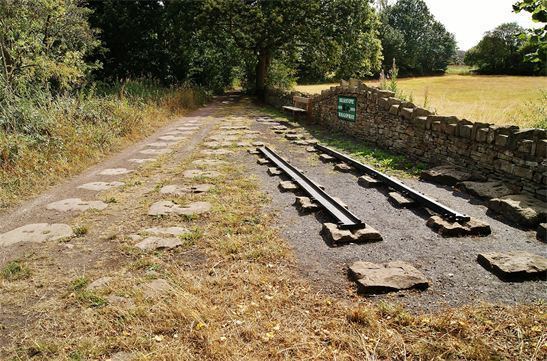 | ||
The Lake Lock Railway was an early narrow gauge railway built near Wakefield, West Yorkshire, England.
Contents
The Company
The Lake Lock Rail Road Company was formed in 1796 with the capital being raised from 128 shares. These were purchased by a broad range of people including a lawyer, banker, doctor, clergyman, merchant and widow. The initial route opened to traffic in 1798 (predating the Surrey Iron Railway), and commenced at Lake Lock, near Stanley, Wakefield on the Aire & Calder Navigation and ran broadly in a westerly direction to Outwood, a distance of approximately 3 miles. In 1804 the route was changed to avoid a steep incline and this resulted in the terminus relocating from Lake Lock to nearby Bottomboat. There were also a number of branches to collieries and a stone quarry. Extensions were constructed to East Ardsley and Kirkhamgate.
Operation
The primary purpose of the line was the carriage of coal from the various coal pits surrounding the line to the Aire & Calder Navigation for shipment elsewhere. Other goods carried include roadstone, timber and burnt lime. The load of three waggons was hauled by one horse with an average gradient of 1 in 70 (1.43%) down to the navigation. The track used edge rails to a gauge of 3 ft 4 3⁄4 in (1,035 mm). Goods were charged by toll, initially at 6d per ton, subsequently increasing to 10 ½ d per ton. In 1807 110,000 tons were being carried each year, however this had reduced to 81,000 tons by 1819 with a further reduction to 76,000 tons in 1823. The line gradually declined and was closed in 1836 when the major colliery owner J & J Charlesworth built an alternative railway.
